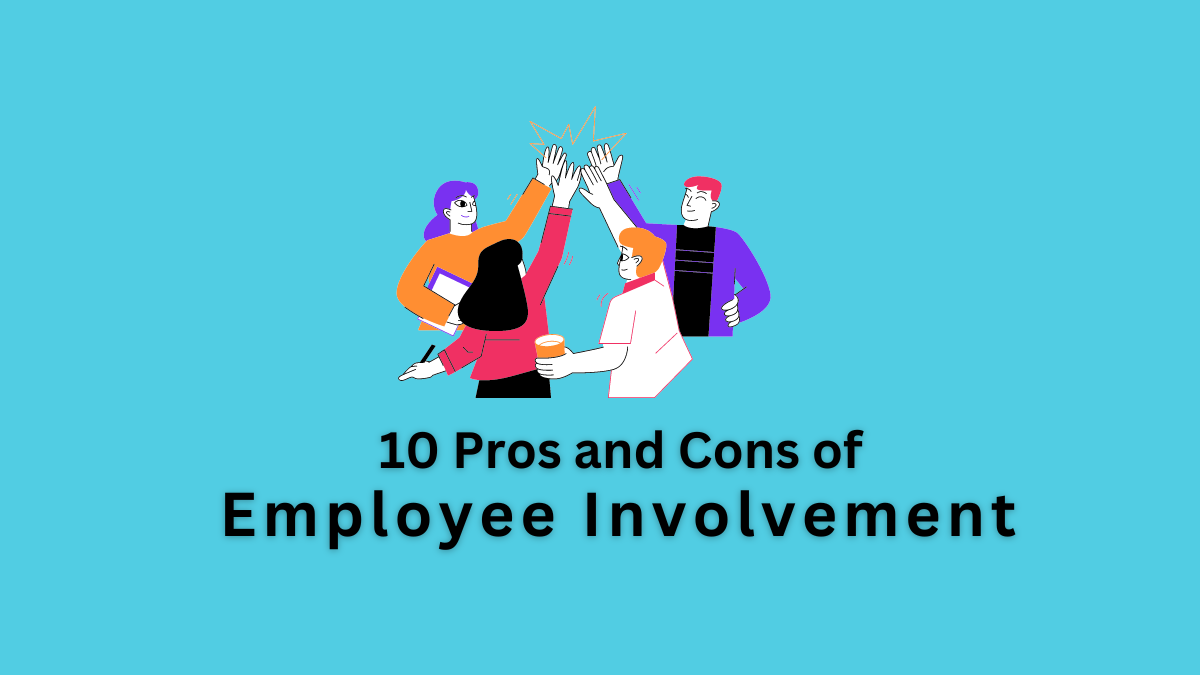Pros and Cons of Employee Involvement
Employee involvement means actively including employees in decisions that affect their jobs, their teams, and the company as a whole. It’s about more than just seeking feedback – it’s about making employees feel that their opinions are valued and their contributions matter.
In an environment where employee involvement is encouraged, workers don’t just follow orders. Instead, they help shape the company’s direction, solve problems, and improve processes. When employees feel empowered, they are more likely to be engaged, motivated, and committed to the company’s success.
The 5 Pros of Employee Involvement
Employees Feel Valued and Appreciated
When employees are involved in decision-making, they feel like an important part of the team. Instead of being just another worker, they see themselves as contributing to the company’s success. This sense of being valued can improve morale, boost self-esteem, and make employees feel more appreciated.
For example, if a company asks for input on how to improve processes or services, employees who contribute feel their opinions matter. This appreciation leads to higher job satisfaction and a stronger emotional connection to the company.
Better Decision-Making
Employees on the front lines of a business often have valuable insights. They deal with day-to-day operations and customers, so they know what works and what doesn’t. When employees are involved in decisions, the company benefits from their unique perspectives and experiences.
Involving employees in decisions can lead to more creative and effective solutions because they can offer insights that managers might overlook. This collaborative problem-solving helps companies make better-informed decisions and avoid pitfalls.
Increased Responsibility and Ownership
When employees have a role in decision-making, they feel more accountable for the outcomes. This sense of ownership motivates them to work harder and take responsibility for their actions. Employees who help make decisions are more likely to follow through with commitment, knowing that their success or failure reflects their choices.
For instance, if a team helps design a new product or improve a process, they are more invested in ensuring it succeeds. When problems arise, they will likely take swift action to fix them because they feel personally responsible.
Enhanced Problem-Solving
Employee involvement brings more minds to the table when tackling challenges. When employees are encouraged to contribute ideas, it opens the door for different perspectives and creative solutions.
With employees from different areas of the business sharing their thoughts, companies can approach problems from new angles. This collective focus helps in finding faster and more efficient solutions to workplace issues.
Read More: Pros and Cons of Outsourcing
Improved Motivation and Engagement
Involving employees in decisions can improve their motivation. When people see that their ideas can influence the company’s success, they feel more connected and engaged in their work.
When employees understand how their contributions make a difference, they are more likely to care about the quality of their work. This increased engagement leads to higher productivity and can improve retention, as employees are more likely to stay with a company that values their input.
The 5 Cons of Employee Involvement
Increased Security Risks
One potential drawback of involving more employees in decision-making is that sensitive information may be shared more widely. With more employees having access to important business data, there is a higher chance of security breaches.
For instance, in a competitive industry, sharing sensitive financial information or strategic plans with a large group of employees increases the risk of leaks. Companies need to be cautious about how much information is shared and ensure that confidential data remains secure.
Blurring of Management and Employee Roles
When employees are involved in decisions traditionally made by managers, the lines between management and staff can become blurred. Employees may start to take on tasks or make decisions that are outside their job descriptions, which can lead to confusion and conflict.
Read More: Pros and Cons of Job Rotation
While employee involvement is about giving workers a voice, it is important to maintain clear boundaries between managerial duties and employee responsibilities. Without clear guidelines, there’s a risk that employees might overstep their roles, confusing who is ultimately in charge.
Slower Decision-Making Process
Involving more people in decision-making can slow things down. When decisions require input from multiple employees, it can take longer to reach a consensus.
For fast-paced industries where quick decisions are essential, this delay can be a disadvantage. Companies need to find a balance between involving employees and maintaining efficiency so that the decision-making process doesn’t drag on unnecessarily.
Read More: Pros and Cons of Product Departmentalization
Communication Overload
With more employees involved in decisions, communication can become more complicated. Managing input from many people can lead to information overload, and important messages might get lost in the process.
Maintaining clear and consistent communication is essential to avoid confusion and ensure everyone is on the same page. Without a solid communication strategy, employee involvement could lead to misaligned goals and conflicting decisions, which can harm the business.
Potential for Conflicting Ideas
When you involve a large group of people in decision-making, there is a higher chance of disagreement. Employees may have different opinions on how things should be done, and these conflicting ideas can slow down the process.
It’s not uncommon for employee involvement to lead to disagreements about the best course of action. This conflict can cause tension in the workplace if not managed properly. Companies need to be prepared to handle differences of opinion and ensure that final decisions are made effectively.
Read Next: Pros and Cons of Organizational Change
